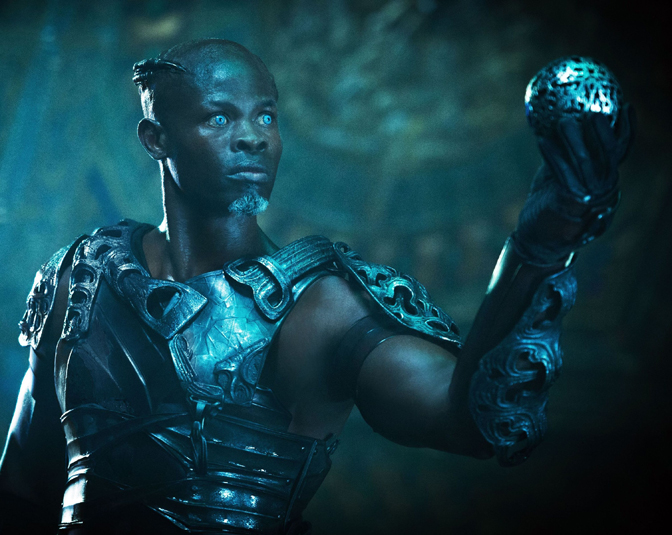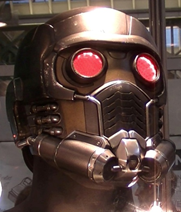
Star-Lord might have to do without his helmet if not for 3D printing. Courtesy of Stratasys.
Latest News
October 31, 2014
It’s easy to tell Marvel movies have done well at the box office by the simple fact that Guardians of the Galaxy even got made. Hollywood has become incredibly risk averse, preferring to make sequels, launch re-boots and remakes of proven hits, rather than taking a chance at getting burned by another John Carter. The result: Guardians of the Galaxy has raked in $752,650,120 in worldwide sales.
Part of the success of the Marvel Cinematic Universe is in the special effects and costuming. It would have been improbable to produce movies like The Avengers in years past, when special effects were a little more rudimentary. Likewise, costume design has come a long way, particularly for sci-fi type projects thanks to 3D printing.
 Korath’s suit was built using 3D printing. Courtesy of Stratasys.
Korath’s suit was built using 3D printing. Courtesy of Stratasys.The odds are good that, if it isn’t computer-generated, and it’s part of someone’s costume, 3D printing had a hand in building it. Large portions of Tony Stark’s suits in Iron Man were built using 3D printing, specifically on an Objet additive manufacturing (AM) system. Now, AM and Iron Man have moved well beyond the movie. Try Googling Ironman plus 3D printing and have a look at all the different ways people have found to use AM to build their favorite superhero.
3D printing was also important in shooting Guardians of the Galaxy. Along with building Korath’s suit, an Objet500 Connex was used to create Star-Lord’s iconic helmet. As is the case in other industries, movie costume designers appreciate the flexibility and time savings offered by AM.
 Star-Lord might have to do without his helmet if not for 3D printing. Courtesy of Stratasys.
Star-Lord might have to do without his helmet if not for 3D printing. Courtesy of Stratasys.“All told, we’re saving at least 50% on lead times, a precious commodity when working on a film, as there’s never enough time,” said Grant Pearmain, director of costume and props at FBFX. “This faith in the 3D printed piece and the speed at which we can have it in our hands, also gives us the flexibility and confidence to regularly experiment and to try new things – something we’ve not always had the time to do.”
3D printing is sure to continue in its role as one of the handiest tools available for the prop and costume design folks. I suspect that if you checked online, you could even find some printable baby Groot models. Below you’ll find a video about a prosthetic hand designed for children based on Iron Man’s hands.
Sources: Stratasys, Box Office Mojo
Subscribe to our FREE magazine, FREE email newsletters or both!
Latest News
About the Author
John NewmanJohn Newman is a Digital Engineering contributor who focuses on 3D printing. Contact him via [email protected] and read his posts on Rapid Ready Technology.
Follow DE





